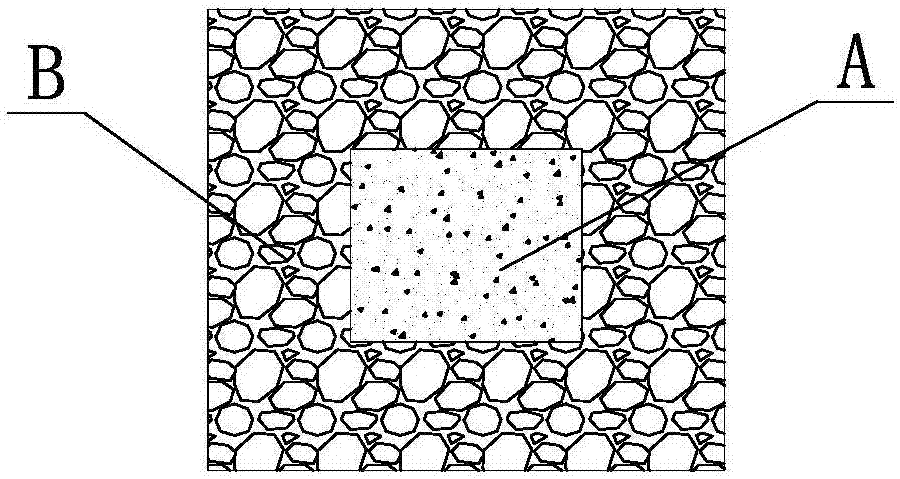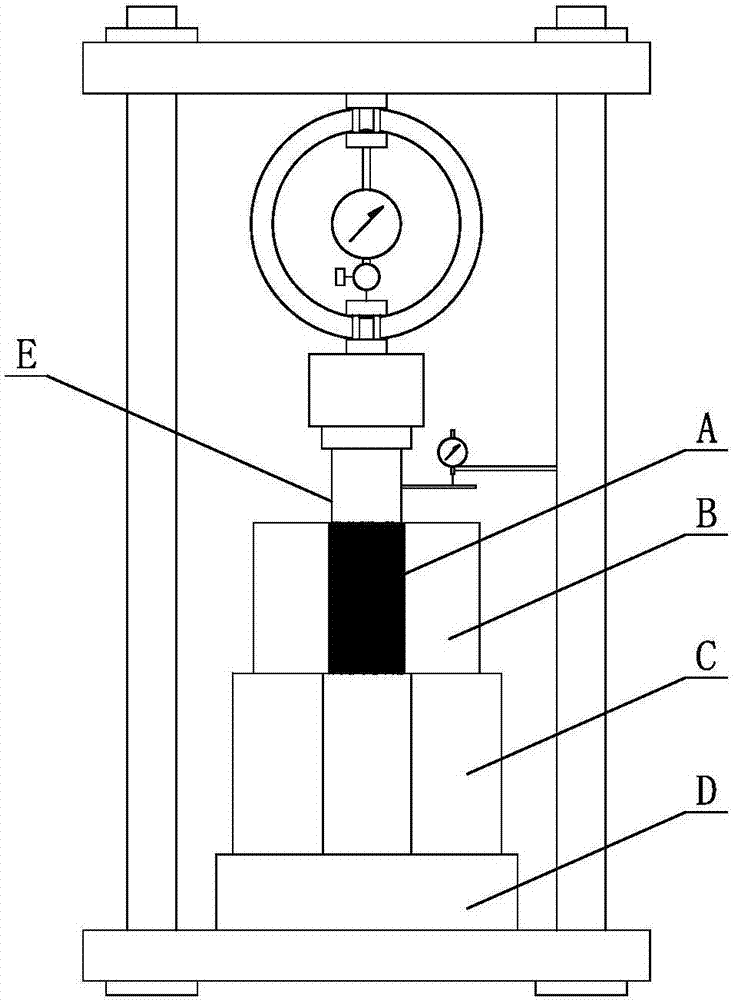Test method of bonding characteristic of disintegrated soft rock and concrete and test sample
A test method and concrete technology, applied in the field of geotechnical engineering, can solve problems such as inability to conduct tests, inapplicability, soft rock fracture, etc., and achieve the effects of ensuring accuracy, reducing damage, and preventing disintegration
- Summary
- Abstract
- Description
- Claims
- Application Information
AI Technical Summary
Problems solved by technology
Method used
Image
Examples
Embodiment 1
[0041] Preparation of soft rock-concrete test specimens:
[0042]S1. Making soft rock blocks: select rough soft rocks, and first cut them with a wire saw to form a small intermediate sample, so that the length and width of the intermediate sample are respectively 2.0-2.0-2.0-2.0-2.0 larger than the length and width of the cuboid-shaped soft rock block A 3.0cm, the height of the intermediate sample is 2.0-4.0cm larger than the height of the cuboid soft rock block A, and then the intermediate sample is gradually cut into the size of the soft rock block A with a utility knife. When the size of the intermediate sample is close to When the size of the soft rock block A is larger than the size of the soft rock block A such as the size of the intermediate sample, use a trowel to smooth the circumferential side of the soft rock block A, and the trowel is used for grinding The grinding surface of the soft rock block A is provided with criss-cross shallow grooves, and the area of the ...
Embodiment 2-1
[0047] Select two groups of different soft rocks to prepare the test sample 1 and the test sample 2 to carry out the interface shear characteristic test, the soft rock block A and the concrete block B in the test sample 1 and the test sample 2 are cuboids, The shape of the end surface of the soft rock block A is square, and the specific test process is as follows:
[0048] Test preparation: in the as figure 2 The tester platform D shown is placed with a bottom pad C with a cylindrical cavity, the upper side of the bottom pad C is provided with a horizontal receiving pad, and the middle part of the receiving pad is provided with a bottom pad that is compatible with the bottom pad. The through hole corresponding to the cylindrical cavity of C; then place the test sample after drying at 105°C on the receiving pad, and place the loading column E on the upper end surface of the test sample , the axes of the bottom pad C, the receiving pad, the test sample, and the loading column ...
Embodiment 2-2
[0054] Then select two groups of different soft rocks to prepare test sample 3 and test sample 4 to carry out the interface shear characteristic test. When different from the embodiment 2-1, the test sample is saturated with water before the test. Treatment, other test procedures are the same as above.
[0055] In the test, the relationship curve between the bond stress τ and the bond-slip displacement value S at the interface of two groups of test samples is obtained as follows: Figure 5 , 6 shown.
[0056] Depend on image 3 , 4 , 5, 6, it can be seen that the S-curve of bond stress τ-bond slip displacement value at the interface roughly includes three parts, namely elastic stage, softening stage and friction stage. The elastic stage is mainly the chemical bonding force between the rock and concrete interface. In this stage, the bond stress at the interface increases with the increase of the bond-slip displacement, and it increases almost linearly. The bond stress at th...
PUM
 Login to View More
Login to View More Abstract
Description
Claims
Application Information
 Login to View More
Login to View More - R&D
- Intellectual Property
- Life Sciences
- Materials
- Tech Scout
- Unparalleled Data Quality
- Higher Quality Content
- 60% Fewer Hallucinations
Browse by: Latest US Patents, China's latest patents, Technical Efficacy Thesaurus, Application Domain, Technology Topic, Popular Technical Reports.
© 2025 PatSnap. All rights reserved.Legal|Privacy policy|Modern Slavery Act Transparency Statement|Sitemap|About US| Contact US: help@patsnap.com



